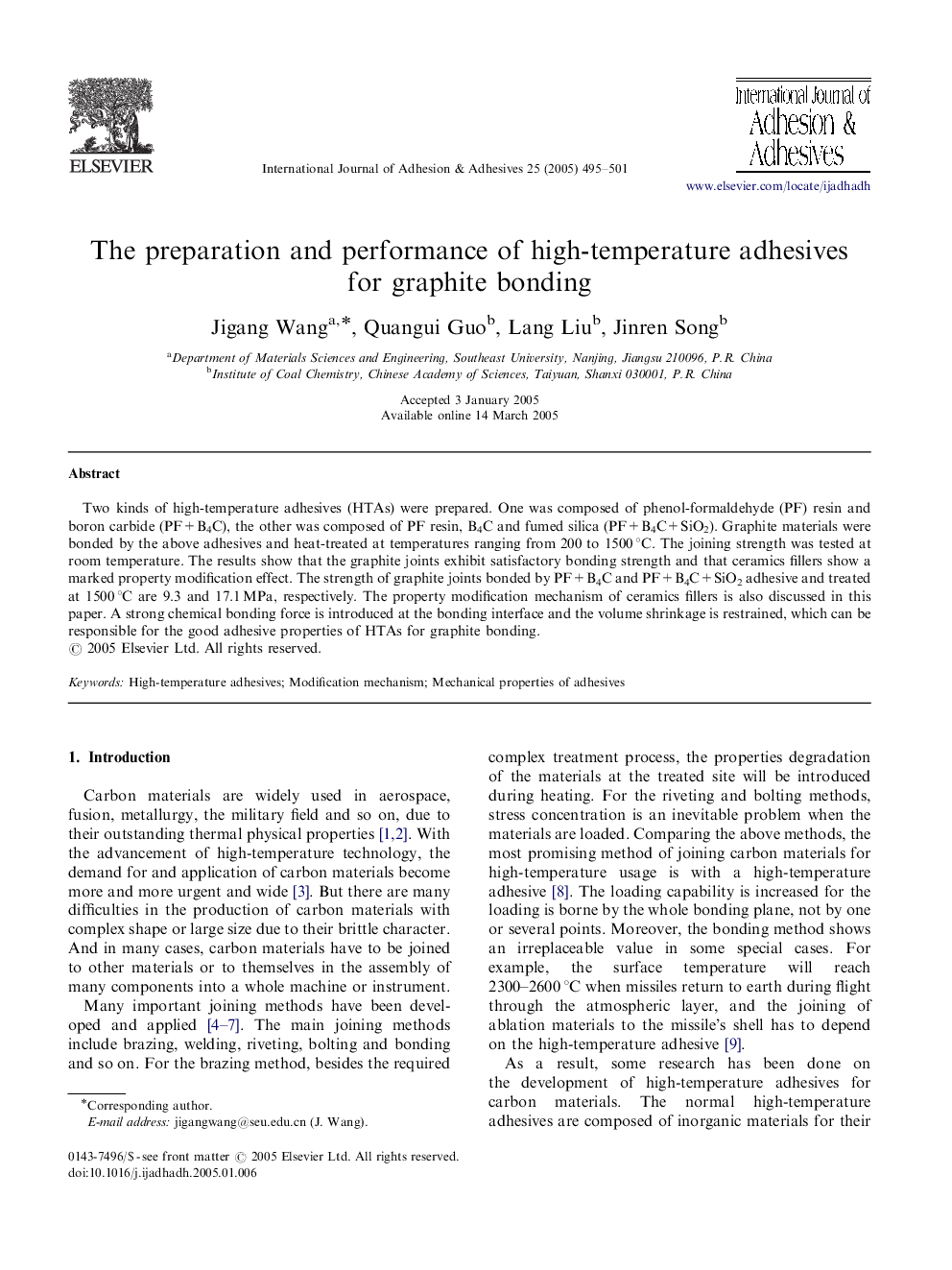| Article ID | Journal | Published Year | Pages | File Type |
|---|---|---|---|---|
| 9703530 | International Journal of Adhesion and Adhesives | 2005 | 7 Pages |
Abstract
Two kinds of high-temperature adhesives (HTAs) were prepared. One was composed of phenol-formaldehyde (PF) resin and boron carbide (PF+B4C), the other was composed of PF resin, B4C and fumed silica (PF+B4C+SiO2). Graphite materials were bonded by the above adhesives and heat-treated at temperatures ranging from 200 to 1500 °C. The joining strength was tested at room temperature. The results show that the graphite joints exhibit satisfactory bonding strength and that ceramics fillers show a marked property modification effect. The strength of graphite joints bonded by PF+B4C and PF+B4C+SiO2 adhesive and treated at 1500 °C are 9.3 and 17.1 MPa, respectively. The property modification mechanism of ceramics fillers is also discussed in this paper. A strong chemical bonding force is introduced at the bonding interface and the volume shrinkage is restrained, which can be responsible for the good adhesive properties of HTAs for graphite bonding.
Related Topics
Physical Sciences and Engineering
Engineering
Mechanical Engineering
Authors
Jigang Wang, Quangui Guo, Lang Liu, Jinren Song,
